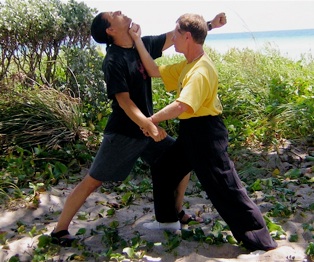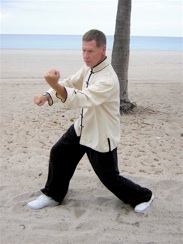Xingyiquan




Xingyiquan (literally “Mind/Form” or “Shape/Will” Boxing) is one of the oldest and best known of the Chinese internal martial arts. It is the art of imposing your will on your opponent by using five shapes or phases of energy and the fighting intent of twelve different animals. These five fundamental movements are: Pi (Split), Zuan (Drill), Beng (Expand), Pao (Cannon), and Heng (Sideways Shear). The five movements are matched up with Metal, Wood, Water, Fire, and Earth elements from the Five Element Theory. Since the late Southern Song Dynasty, nearly one thousand years ago, Xingyiquan has been the basic training for new recruits of the Chinese army. Whether Marshal Yue Fei (1103-1142AD), the great Chinese hero and Defender of the Realm, actually created this art or not is still being debated. He did, however, pass down many treatises on this art and codified its training program so a new soldier had only to learn five Fist patterns; something he could do in a fairly short time. These same five energy patterns also adapted themselves to universal weapon techniques giving the soldier the ability to simply use whatever weapon was at hand: sword, saber or spear. In consideration of the weight of military armor and weapons, all extraneous movements were eliminated and the footwork pared down to the half-stepping necessary to get in out of fighting range.
Although Xingyiquan is classified as an internal style, its theory and principles are very different from those of other internal styles, such as Taijiquan and Baguazhang.. Taiji uses defense as an offense, sticking, following and emphasizing power that is soft as a whip, but strong and penetrating. Baguazhang emphasizes circular movements combined with constant stepping and the power of a coiled spring that can explode in any direction. Xingyi uses offense as a defense. Its power is like a rattan staff: soft at the beginning yet hard at the instant of striking.
Xingyiquan movements are easy to learn, but like anything else, to master it requires dedication and hard work. It is an excellent introduction to the internal side of martial arts training for the external martial artist. It is also an excellent transition style for Taijiquan students to gradually get more involved with the fighting aspects of his/her training.





What is Xingyiquan?
YMAA Xingyiquan Training Schedule
Xing Yi Qigong
This Qigong training helps the student understand and feel Qi. Based on the expansion stances of Yi Quan, it builds the structure and seven bows of the body.
Five Elements
The fundamental movements of Xingyi are called Pi (Splitting), Zuan (Drilling), Beng (Crushing), Pao (Bursting) and Heng (Crossing). These five basic techniques and their relationships are based on the Chinese Theory of the Five Elements: Metal, Water, Wood, Fire, and Earth.
Five Elements Linking Sequence This training sequence is comprised of the five basic techniques. Practicing this sequence helps the student understand the theory and applications of the five elements. It also trains the way the elements flow into each other.
Combined Element/Animal Sequence
This training sequence is constructed of the Five Elements techniques and fighting techniques of the twelve animals. This sequence gives the student a deeper understanding of the art.
Twelve Animal Shapes Each of the twelve animals has it’s own mini sequence which develops it’s particular attribute. The animals also give “flavor” to the elements. These animals are Dragon, Tiger, Monkey, Horse, Water Lizard, Chicken, Sparrowhawk, Swallow, Snake, Phoenix, Eagle, and Bear.
An Shen Pao Fighting Set An Shen Pao means “Secure Body Strike” and is a well-known two person fighting set. Practicing this sequence enables the student to understand and master the techniques taught in the XingYI solo sequences.
Typhoon and Thunderbolt Swordmanship This is a Xingyi universal weapon form that teaches the student how to use any object as a weapon via twenty techniques. It has both a solo and two-person matching version.
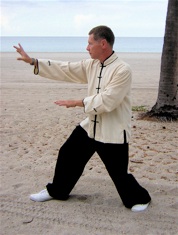
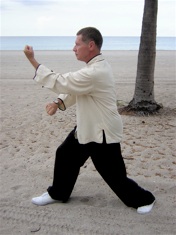
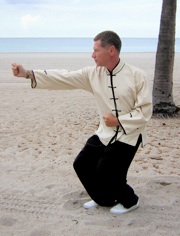
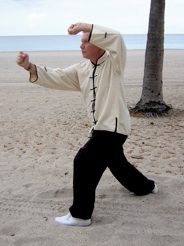
Pi (Metal) Zuan (Water) Beng (WOOD)
Pao (Fire) Heng (Earth)
